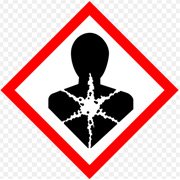
Nocturnal Angina
Nocturnal angina is not uncommon and was believed to be associated with significant multivessel disease. It may, however, reflect circadian changes or simply result from unrecognized gastro-esophageal reflux causing reflex angina. Frequent episodes of unprovoked rest pain, however, are unusual unless the angina is unstable.
The Diagnosis of Angina Pectoris
The consistency with which the symptoms of Angina Pectoris are reproduced by exercise and other stressors is of great importance. Often, too much attention is paid to the quality, site and radiation of pain in the diagnosis of Angina Pectoris. The duration of pain is also important since angina usually lasts less than five minutes and is relieved rapidly by short-acting nitrates.
Textbooks describe the presence of additional third and fourth heart sounds. These are rarely of use in diagnosis in clinical practice. A careful examination should detect signs of significant aortic valve disease which may be the cause of angina, or simply a compounding factor. Signs of heart failure should also be looked for since these will require specific therapy and carry an adverse prognosis. Mitral regurgitation is also found and may be functional or due to restricted posterior cusp motion of the mitral valve.
The patients of Angina Pectoris often have vascular disease elsewhere and evidence for this should be sought. The carotid and peripheral pulses should be examined carefully. A hypertensive tendency might be due to coexistent renovascular disease or renal artery stenosis.
Related Links
- Simple Definition of Angina Pectoris
- Causes of Angina Pectoris
- How To Diagnose and Investigate Angina Pectoris?
- Useful Tips on The Management of Angina Pectoris
- How To Naturally Lower Blood Pressure? Watch Video
Leave A Comment